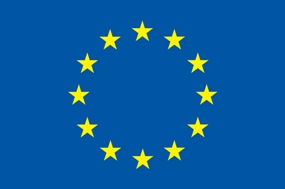20. October 2015
Start exporting!

Steps to internationalisation and MULTISENSOR’s role
Companies who export have more chances to endure, to establish stable growth prospects, and to have higher profitability than enterprises who do not. In the following we give you an overview of steps needed to start or consolidate an internationalisation process and show how MULTISENSOR will be able to assist in this process.
Initially, you need to assess the export readiness and potential of your company and product. Firstly, there is the need to consider your domestic competitiveness position, the relation you have with your current costumers as well as the preparation of the staff and management to start looking abroad. Ideally, the company should have a website and a catalogue of their products or services in order to have visibility and selling potential right from the start.

Exploring your Strengths, Weaknesses, Opportunities and Threats
Once we know that starting to export constitutes a good opportunity, we need to begin a market research to identify where to initiate the commercialisation. For doing that, much information of different nature has to be analysed and processed. For instance, a diversity of economic indicators both from country and sector are to be considered. Depending on the product that we want to export, we will have to look at different aspect of the countries or regions we want to address: easiness of doing business, cultural characteristics, demographics or climate can affect our decision. Furthermore, market trends, news and disruptions, and particularly possible competitors have to be included in the equation. MULTISENSOR will be of good help in this step by allowing for quick translations from different languages to your target language, but also by making the data easily comparable by using a clear interface do display the findings.

Taking off to other markets
Once we have analysed our international potential with the help of the software and defined our possible targeted markets, it is important to define a business plan for internationalisation. Planning our actions is essential to succeed. We need to outline the directions of our commercialisation and make a proposition for each target market. Indeed, we also need to first define our financial investment to reduce our risks and make better decisions when the operations begin.
In all, starting an internationalisation process requires meticulous planning, persistence and making informed decisions to increase our success chances. One of MULTISENSOR’s objectives is to ease this process by offering supporting the market identification process. The online platform aims at gathering a variety of indicators, market trends and news that will reduce burdens especially for SMEs and entrepreneurs. Hence, there will be significantly lower information costs to make a better decision when selecting the market we want to start exporting to.
Photo Credit:
- Feature Image “Around the world” by Justin.Li on Flickr – Licenced under creative commons
- Picture “SWOT” by Michael Laine on Flickr – Licenced under creative commons
- Picture “werks” by Zach Stern on Flickr – Licenced under creative commons

